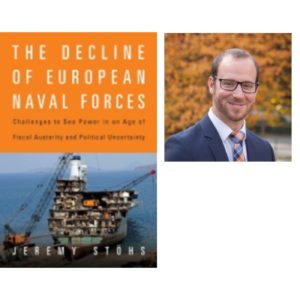Podcast: Play in new window | Download
Subscribe: RSS
 I interviewed historian Kimberly Lamay Licursi about her new book “Remembering World War I in America” being released by University of Nebraska Press in March 2018.
I interviewed historian Kimberly Lamay Licursi about her new book “Remembering World War I in America” being released by University of Nebraska Press in March 2018.
1:09 – Kimberly’s interest in history began with her interest in genealogy. She began in the government field. The book came out of a seminar class she was taking and research she did at the archives of New York state. She noticed that not many books had been written about America in WWI.
3:26 – States tried to create histories of the war. Kimberly looked at movies and pulp fiction to determine how Americans remembered the war. There was even a WWI pulp fiction genre.
6:12 – Many Americans were apathetic after the war. People wanted to move forward from it and thought that maybe they shouldn’t have been involved in it. A lot of soldiers wouldn’t even participate in state remembrances for the war. Many were unemployed and poor after the war.
8:12 – Gold Diggers is a 1930s movie that mentions the Bonus Army. She looked at other movies from 1918 to 1941 such as Four Horsemen of the Apocalypse. The Big Parade is the first to really look at the American experience in the war. Aviation movies like Wings became popular later on. Sergeant York becomes very popular right before WWII.
13:24 – King Vidor was one director who wanted to make a grand film but didn’t necessarily want to do a war movie. Warner Brothers made a WWI movie only because they were focused later on WWII.
15:29 – The soldiers who returned after the first returning wave didn’t get parades. Many soldiers resented what they had been through. They weren’t commonly thanked for their service.
17:44 – Americans didn’t see much of the war or the dead. Many dead soldiers were interned in Europe.
19:43 – Even Europeans didn’t talk about the Americans very much. Many Americans wrote memories but they weren’t popular among the public.
21:57 – A Farewell to Arms is one of the more important books about WWI for Americans. But it doesn’t really sell well until the 1950s when it came out into paperback. Academics made it popular and made students read it.
26:19 – The American Legion was prominent in trying to remember American soldiers after WWI. It was made up of veterans without much support from civilians.
28:59 – Kimberly most enjoyed reading the pulp fiction about the war. It was very light hearted and fun in many ways. Many of the writers were veterans.
34:21 – During the war many publishers were making a fortune putting out memoirs but soon after, the market disappeared. Most of the war books were supportive of the war, especially with the speech restrictions.
35:33 – There weren’t Federal efforts to get information out. Carnegie funded some national level private efforts.
36:53 – One female memoir by Ellen Lamotte called the Backwash of War is difficult to read because it presents the horror of war and was banned. Katherine Mayo wrote a popular memoir named That Damned Y. Many women wrote war memoirs who were in the war as ambulance drivers and nurses. Willa Cather and Edith Wharton wrote about the war.
39:48 – Two black women wrote memoirs about the war. A black film production company made a movie about the war and African-Americans.
43:40 – Kimberly would like to next write about remarkable women in the 1920s and 1930s. Women lost to history.
Links
http://www.imdb.com/title/tt0024069/?ref_=nv_sr_2
http://www.imdb.com/title/tt0012190/?ref_=nv_sr_5
http://www.imdb.com/title/tt0015624/?ref_=fn_al_tt_1
http://www.imdb.com/title/tt0018578/?ref_=fn_al_tt_2
http://www.imdb.com/title/tt0034167/?ref_=nv_sr_1
https://en.wikipedia.org/wiki/A_Farewell_to_Arms
https://en.wikipedia.org/wiki/King_Vidor
https://en.wikipedia.org/wiki/Ellen_LaMotte
https://en.wikipedia.org/wiki/Katherine_Mayo
https://en.wikipedia.org/wiki/Willa_Cather
https://en.wikipedia.org/wiki/Edith_Wharton
For more “Military History Inside Out” please follow me on Facebook at warscholar, on twitter at Warscholar, on youtube at warscholar1945 and on Instagram @crisalvarezswarscholar
Guests: Kimberly Lamay Licursi
Host: Cris Alvarez
Tags: world war 1, WWI, veterans, us army, pulp fiction, memoirs, memorials, remembrance, King Vidor, movies, h9ollywood


